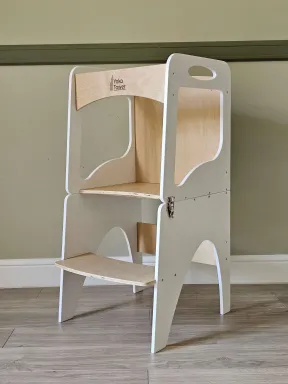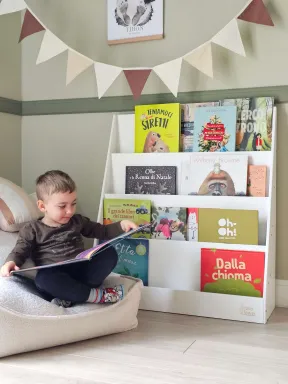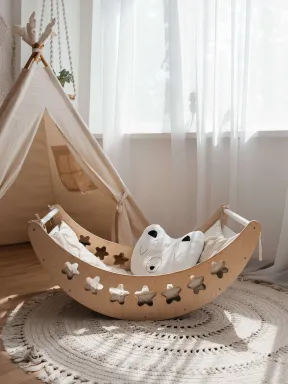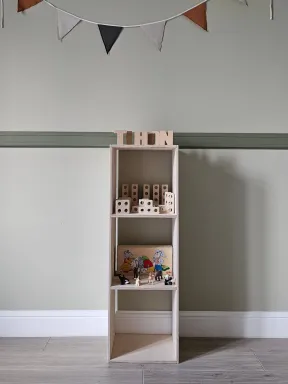- Montessori style nursery
- 0 likes
- 5682 views
- 0 comments
- montessori at home, montessori, children's room, children's mirror

The Role of the Mirror in a Child’s Room According to the Montessori Method
A mirror is a powerful and versatile tool that can transform a child’s room into a stimulating and educational environment, following Montessori principles. In this article, we will explore how to correctly use mirrors to stimulate your child’s development and provide ideas for their placement and use in the bedroom.
Stimulating Development with Mirrors
Mirrors play a fundamental role in the cognitive, motor, and emotional development of children. Here’s how they can be used to support your child’s growth:
1. Self-Awareness
One of the most important aspects of child development is self-awareness. Mirrors help children recognize their own image, developing an understanding of themselves and their bodies. This process is essential for the formation of identity.
2. Coordination and Motor Skills
By watching themselves in the mirror, children can observe their movements and learn to coordinate them better. This practice promotes the development of motor skills, as little ones learn to control their body movements by observing their reflection.
3. Visual Stimulation
Mirrors expand the visual space and offer a different perspective of the surrounding environment. This visual stimulation is crucial for the development of spatial perception and orientation.
Ideas for Placing Mirrors in the Child’s Room
Using mirrors in the child’s room must be carefully planned to ensure safety and effectiveness. Here are some ideas on how and where to place mirrors:
1. Horizontal Wall Mirror
A large horizontal mirror mounted on the wall at the child’s height is ideal for little ones. This type of mirror allows the child to see themselves fully and observe their movements naturally.
2. Mirror with a Bar
Adding a support bar in front of the mirror offers a double advantage. The bar helps children balance themselves while looking in the mirror, promoting equilibrium and safety. It is especially useful for children learning to stand and walk.
3. Mobile Mirror
A mobile mirror can be easily moved around the room to adapt to different activities. This type of mirror is versatile and can be used for interactive play, dancing, and other motor activities.
4. Reading Corner with a Mirror
Creating a reading corner with a mirror can make the reading experience even more engaging. Children can observe their expressions while reading, making the activity more interactive and fun.
Ensuring Safety
Safety is an absolute priority when using mirrors in a child’s room. Here are some tips to ensure the mirror is safe:
- Shatterproof Mirrors: Use mirrors made from shatterproof materials or with a protective film that prevents shattering in case of breakage.
- Secure Mounting: Ensure mirrors are securely fastened to the wall or support to prevent falls.
- Rounded Corners: Choose mirrors with rounded corners to prevent injuries in case of bumps.
The Role of YokoTower
Although YokoTower does not produce mirrors, we offer a wide range of furniture and accessories that can be perfectly combined with the use of mirrors in a Montessori room. Our bookshelves, learning towers, and ergonomic chairs create an ideal environment where children can grow and develop safely and independently.
Integrating a mirror into your child’s Montessori room can make a significant difference in their development. Not only does it stimulate self-awareness and motor coordination, but it also promotes emotional and cognitive growth. Follow YokoTower's advice on how to correctly place and use a mirror, and watch as your child explores and grows in a safe and stimulating environment. With YokoTower, you can create a space that supports and inspires your child at every stage of their development.









